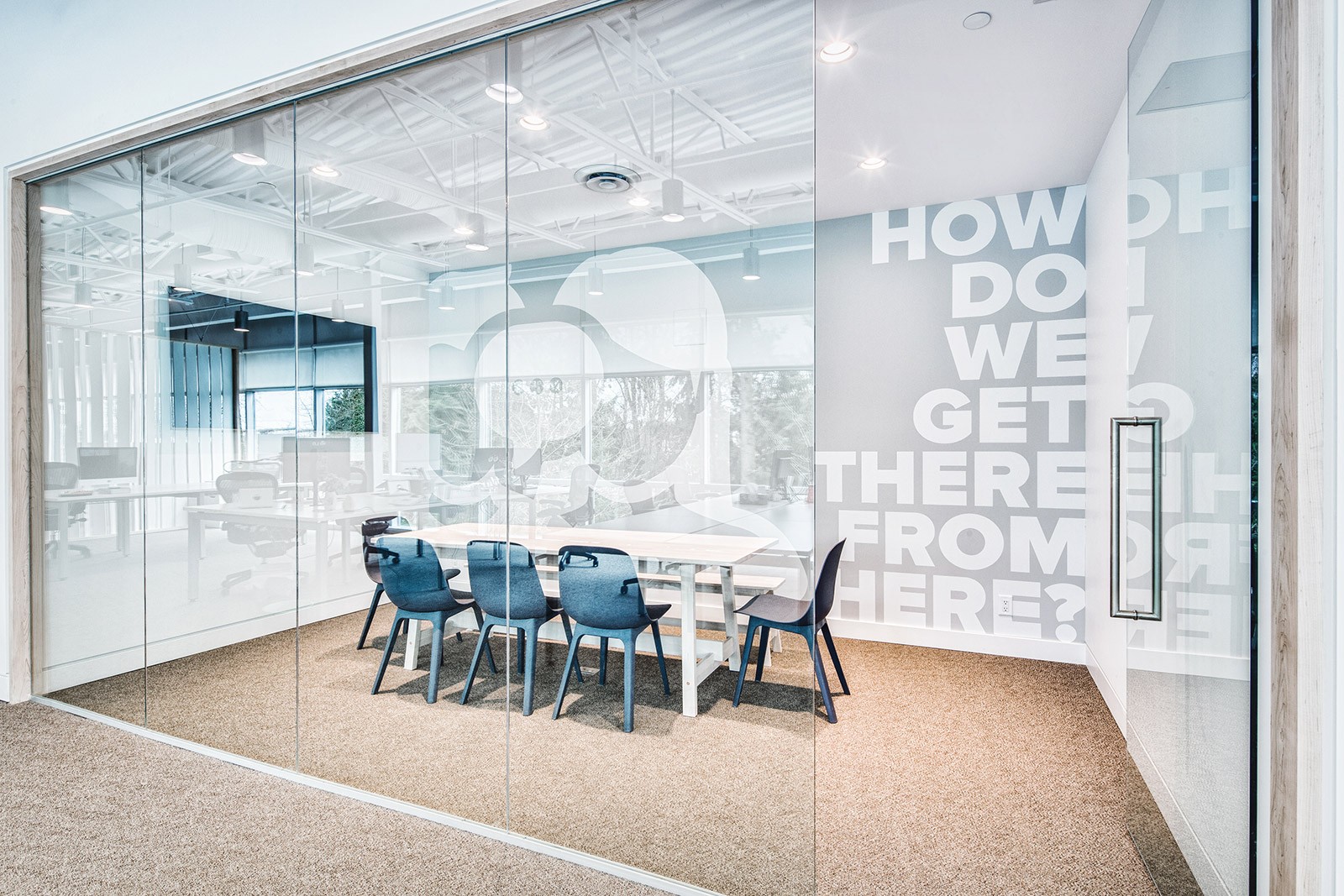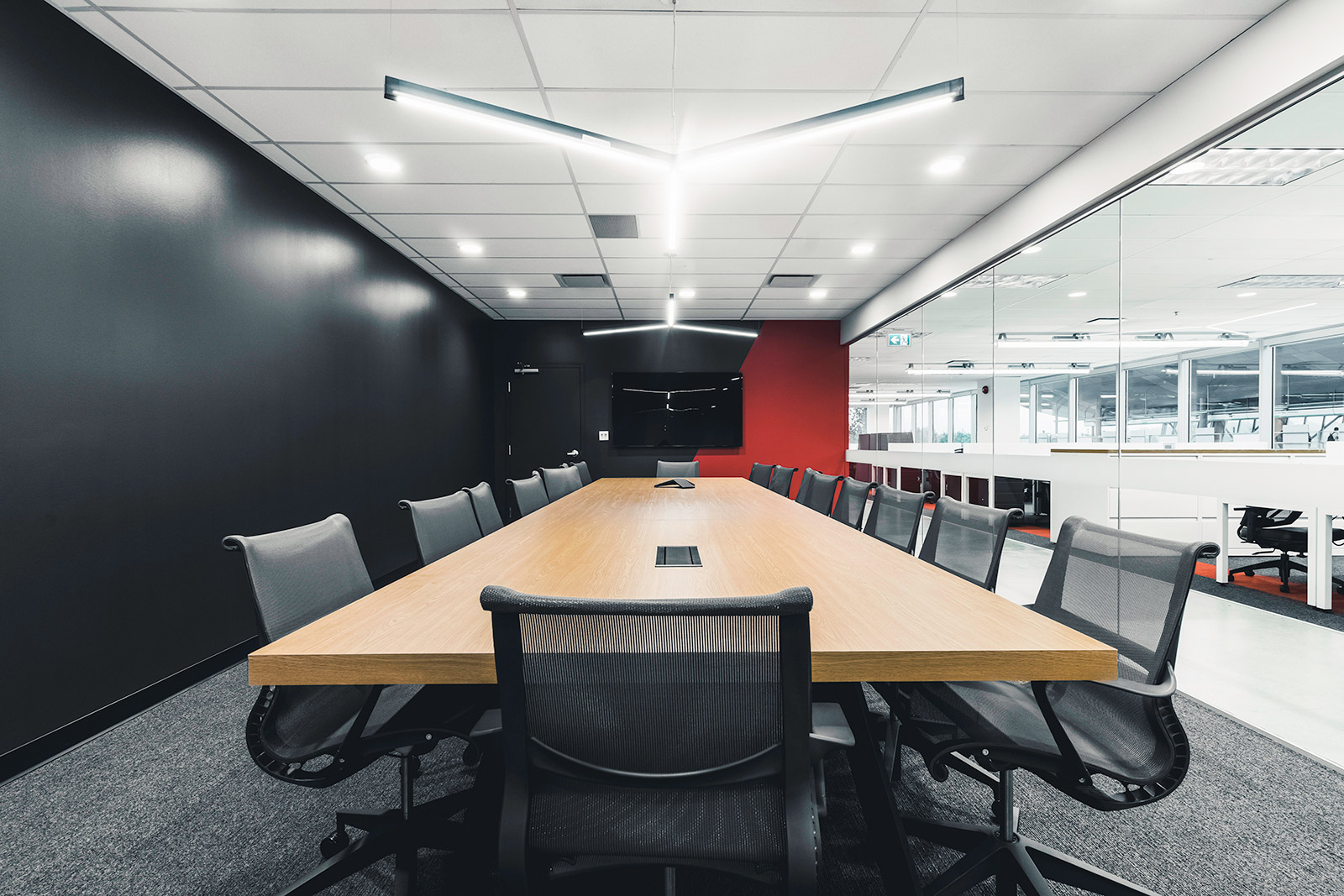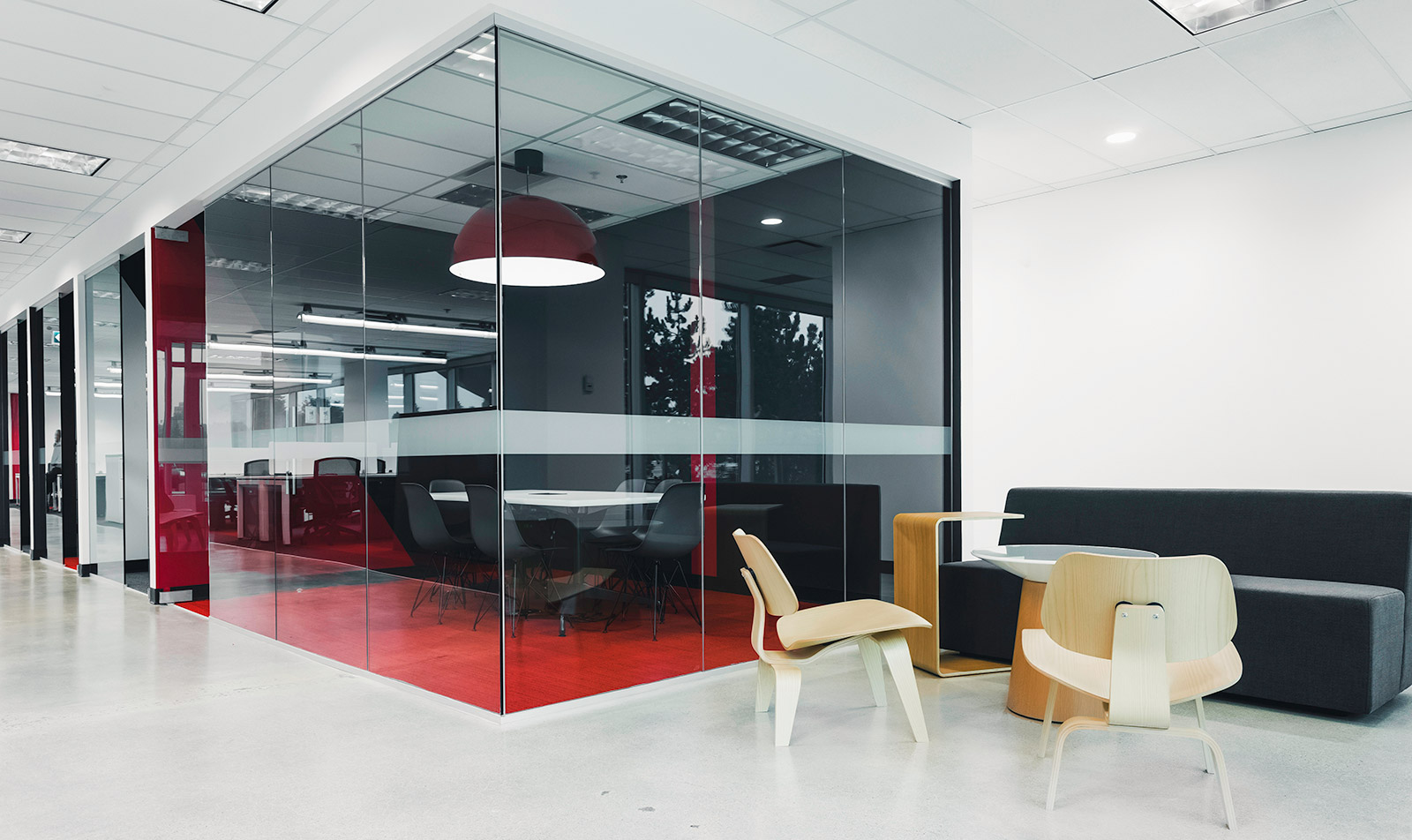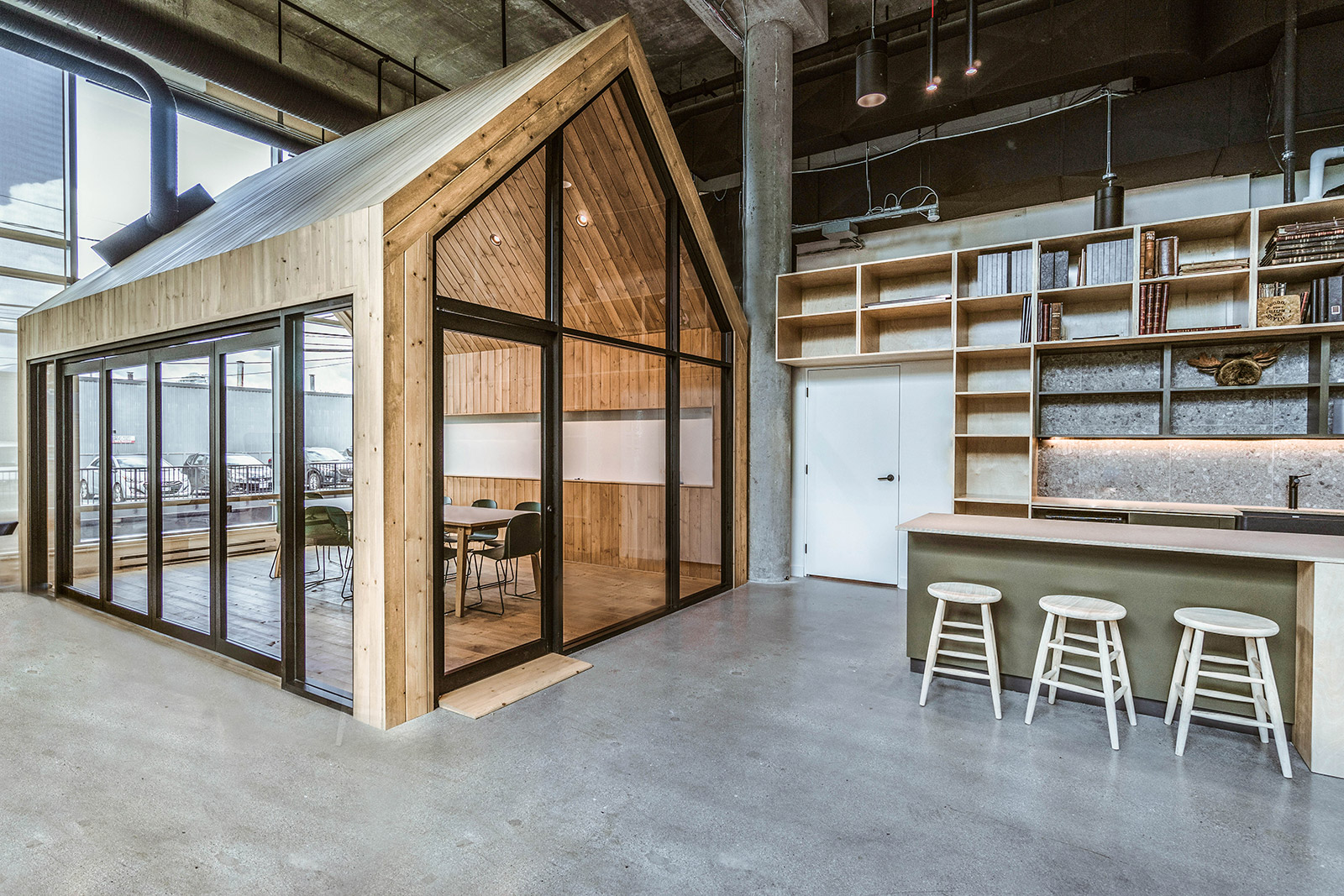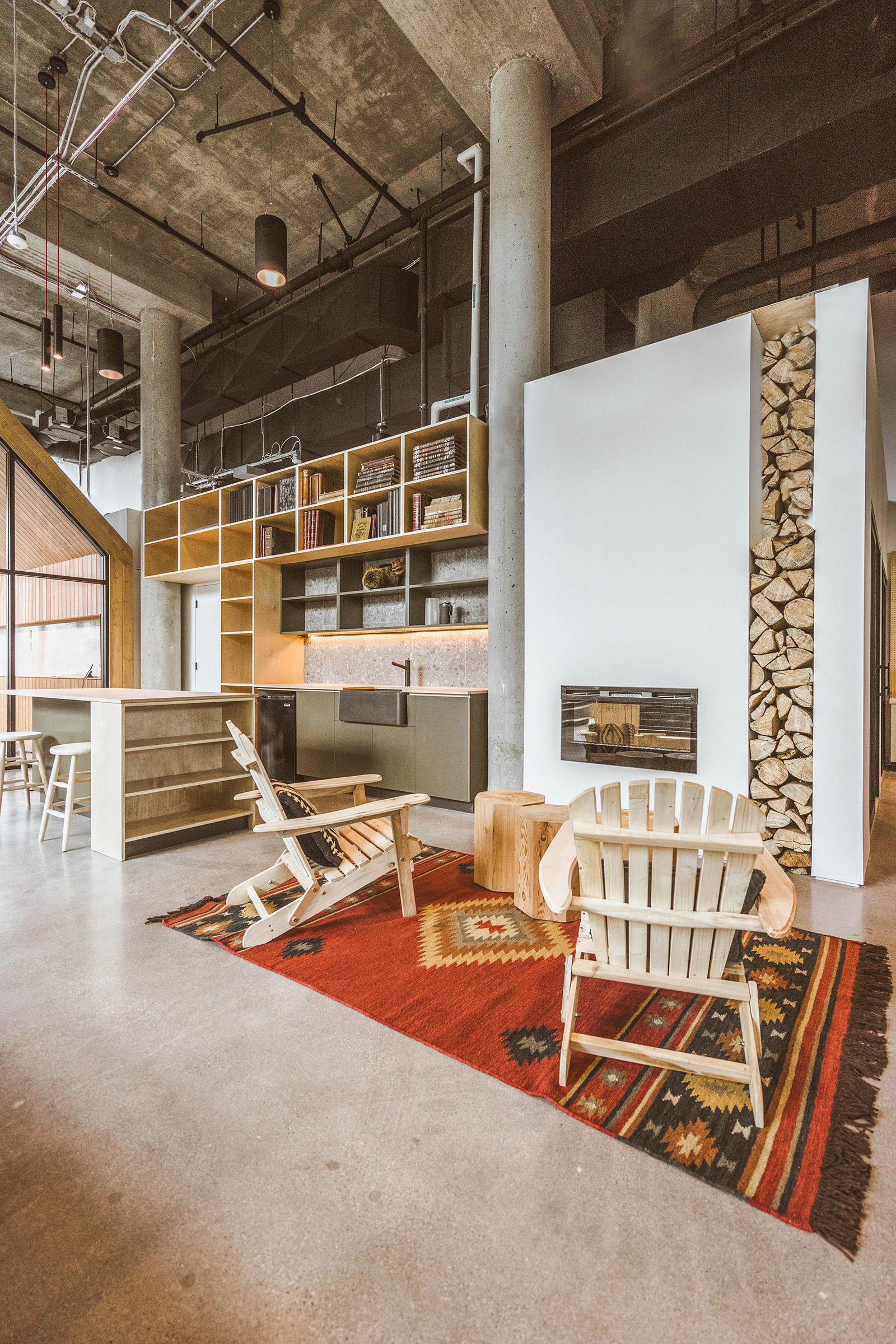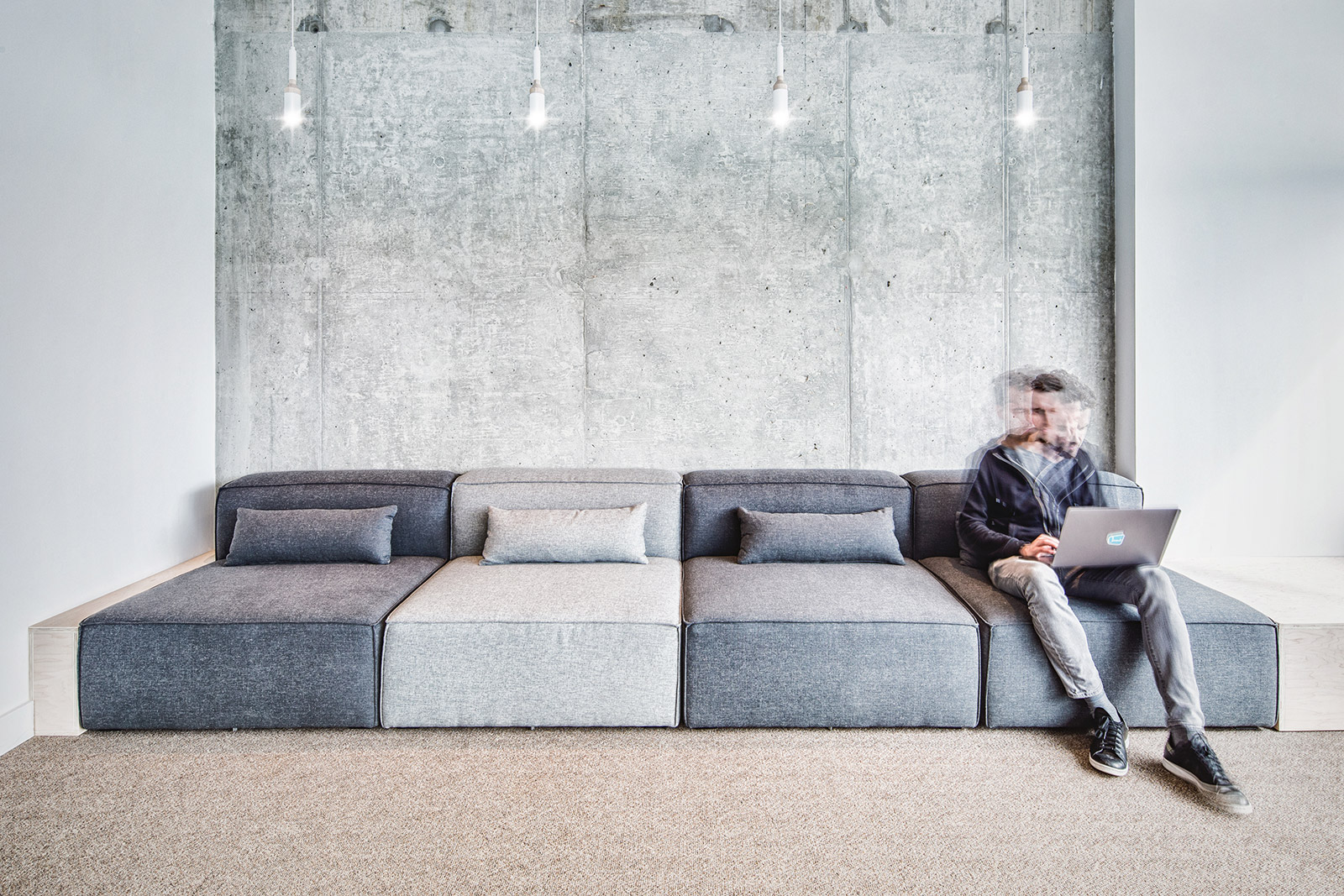7 Tips for Improving the Health, Happiness and Productivity of Your Team Through Interior Design
Your office environment has the power to make or break the health, happiness and productivity of your team. And for most, it’s breaking it. Studies have shown that 87% of workers currently feel unengaged and unsatisfied in their place of work — an alarming statistic given that a third of our lives are spent at work.
So what can you do? Our very own Morgan Thomas shares how you can improve employee engagement and create a more positive and productive work atmosphere through design on the latest episode of “Outback Team Building & Training Tips“.
Listen to that episode here and learn how you can boost the engagement of your team through design:
Flight Centre Office by Cutler
How to Improve Team Engagement, Happiness and Productivity Through Interior Design
1. Put Function First
At its core, a workspace needs to be functional. A space can look great, but if it doesn’t support the different types of people, departments and workflows that happen within it, office productivity will suffer.
Cubicles, for example, can afford employees privacy (both visual and acoustic) but are not a very efficient use of space. They can also make employees feel isolated, which can hinder collaboration and happiness levels. While visual and acoustic privacy is great, there are more strategic ways to create privacy in just the right increment so people can be productive without feeling like they’re boxed up in their own little world.
When setting up your office, you have to be mindful of things like this and create a space that supports your team and business functions throughout the day – while also enhancing the culture and ultimately being a space that people enjoy spending time in.
Flight Centre Office by Cutler
2. Design for Your Business Needs
There are many different types of offices. Some offices are customer facing, others are not. When designing a customer facing office, you need to design with the customer experience in mind and create a space that gives clients a great first impression every time they walk through your door. On the flip-side, if your office is solely for the use of you and your team, you may want to design a space that feels more like home.
Our behaviors are really driven by what’s happening in our environment. If you want people to sit in a space, you put chairs. If you want people to meet in a space, you put a big table in a gathering area. There are also tools, such as different types of pathways, that you can use throughout an office to drive things like engagement. Big, open workstations can provide you with opportunities to create flexible spaces that facilitate employee interaction and collaboration.
TIP: Think about what you want to happen in your space, and design with that in mind.
3. Create Both Acoustic and Visual Privacy
Acoustic and visual privacy are two of the most important elements when designing a workspace. Not taking these into account can result in a distracting environment that breeds employee stress and low productivity. Acoustic separation doesn’t necessarily need to come in the form of walls, however. You can apply acoustic materials to ceilings, ceiling and walls. Carpet is a great example of an acoustic material that can easily be used to cover a large surface area. Partial-height acoustic partitions between workspaces are also a great alternative to cubicles that cut down on acoustics and block visual distractions, while also making the space feel open enough that people can actually interact and engage with each other.
4. Inspire Engagement and Productivity with Colour
There have been several studies on the psychology of colour and how different colours make us feel. Colour has even been proven to affect our productivity. It is important to know what you’re trying to achieve with the colour, and how to pick one that’s based on your goals.
Yellow tones, for example, have been shown to increase productivity. But using a lot of yellow can be overwhelming. The wrong shade of yellow can also create more tension and stress. Blues and greens are generally more calming. Neutrals tend to be less distracting however too many neutrals can ultimately create a dull environment.
When approaching colour, one strategy that we like is to develop a neutral foundational palette, then bring in colour through items that can be easily changed over time to add freshness and ensure that the space stands the test of time. Items such as furniture and communal areas are great opportunities to get adventurous with your colour palette. While primary wall and carpet colours are often best done in a neutral palette.
5. Revamp Your Office with Some New Furniture, Lighting and/or Communal Areas
New furniture is an easy way to make an impact in a stale space. If you haven’t renovated your office in a long time, that might not sound quite as fun as some of the other options listed, but office furniture has really come a long way and the right pieces can transform the way your team utilizes the space. Even simple things like desk chairs with improved ergonomics and more functional pieces of furniture can support people in their day-to-day tasks, make them more productive, and maximize comfort throughout the day.
Lighting can also have an enormous impact on office culture and productivity, particularly if you’re in an older office. The right colour temperature and output can create a much more comfortable and focused environment. And big improvements to LED fixtures in recent years mean that you can get great light levels and even greater savings in operational expenses, since they use far less power than more traditional fixtures.
Communal areas are another one of our typical focus areas. If you can only refresh one area of your office, this is the area to start. We recommend picking a space that will add a lot of value to the entire team, not just a couple of individuals. It really helps to build team spirit and fuel collaboration. If you design communal spaces properly, they can actually add to the productive square footage of your office by becoming impromptu meeting spaces and quiet spaces for individuals or smaller teams.
6. Create Opportunities for Employees to Stretch Their Legs
We talk a lot about sit-to-stand desks and making sure that people aren’t sitting for too long, but another great way to make a big difference in the work lives of employees is to put high-use items like the copier in a communal area. This provides an opportunity for staff members to stretch their legs and creates impromptu interaction. This might sound like a bit of an annoyance, but after putting it into practice we’ve found that people really enjoy and appreciate the little breaks throughout their day.
7. Give Your Space A Fresh Coat of Paint
One of the simplest and most cost-effective improvements that can make a big impact in your workplace is a fresh coat of paint. Replacing a dated colour with something more modern, or even getting a bit more creative and incorporating a pattern or mural that expresses your company culture, can significantly improve the atmosphere in your office. It’s a simple fix, but works wonders.
Bonus Tip
Don’t be afraid to incorporate some quirky items into your space and really figure out how to tell the story of your company and the people who make it. This goes a long way in helping you express who you are to visitors, while also making employees feel like the space is their own. There’s no better opportunity to express that team spirit and brand identity than the actual, physical office environment.
Want help transforming your office into a space that facilitates the health and productivity of your team and business? Contact us.


